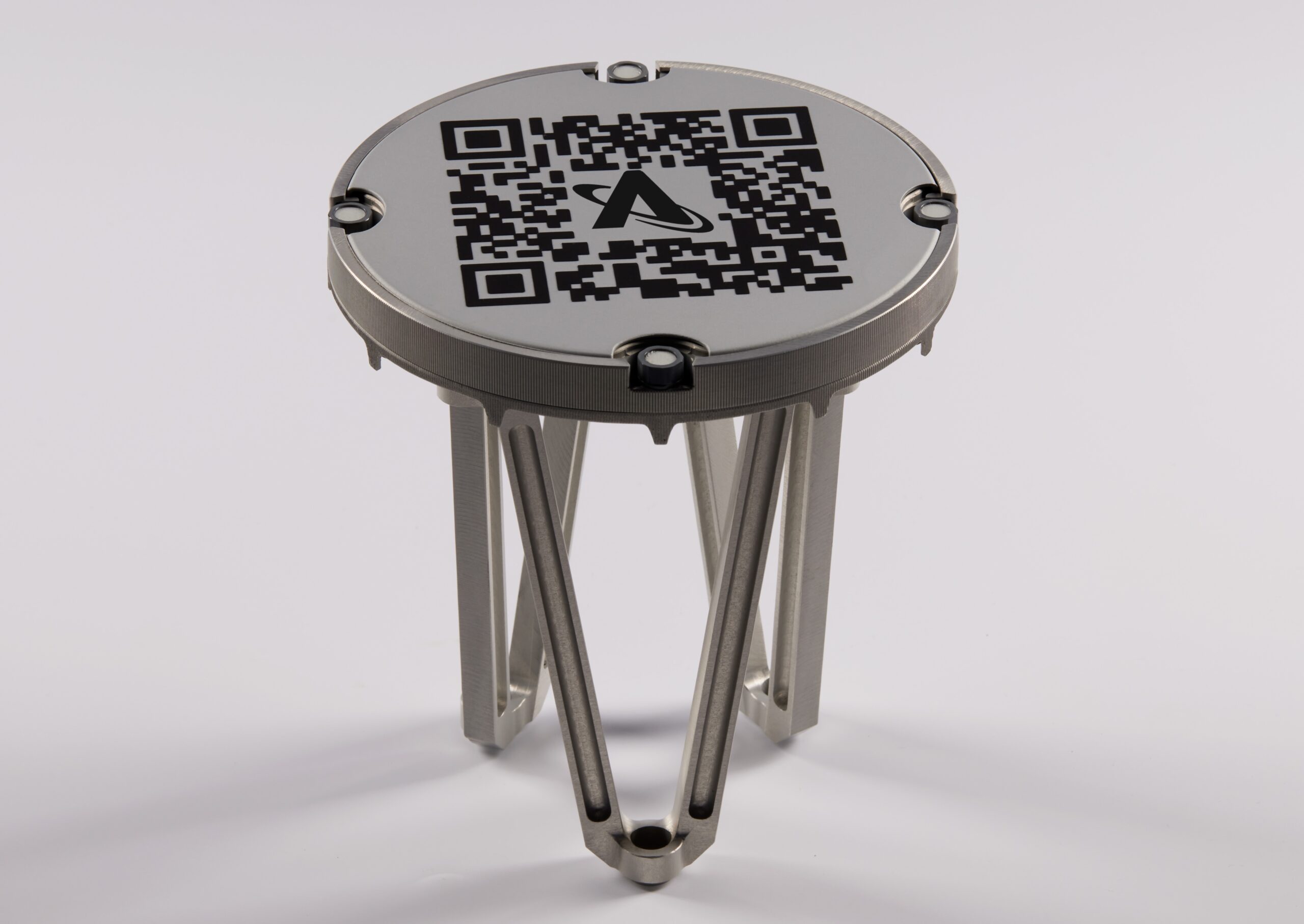TAMPA, Fla. — Small satellite builder Astro Digital plans to add an Astroscale docking plate to upcoming spacecraft to make it easier for them to use in-orbit services being developed by Astroscale and others.
The companies said July 31 the first docking plate would be attached to an undisclosed satellite later this year for a launch in the fourth quarter of 2024.
It is the first time 10-year-old Astroscale has announced a commercial partnership for the hardware, as work continues to demonstrate how upcoming servicers could perform de-orbit and life-extension missions after latching onto the docking plate.
Tokyo-based Astroscale declined to discuss further details about its partnership with Astro Digital, including how many satellites are in their agreement.
Similar to other smallsat specialists, Santa Clara, California-based Astro Digital has been building increasingly larger spacecraft after initially focusing on the smallest cubesats. The company currently offers spacecraft ranging from 10 to 200 kilograms.
Compatible with magnetic and mechanical capture methods, Astroscale’s circular docking plate is a little larger than a compact disc at 15 centimeters in diameter, and the hardware weighs less than 500 grams in total.
Astroscale demonstrated how a servicer could latch onto an earlier version of the docking plate in 2021 during magnetic capture and release tests as part of ELSA-d, or End-of-Life Services by Astroscale-demonstration, in low Earth orbit (LEO).
First demo cut short
ELSA-d’s 175-kilogram servicer later lost the use of half its thrusters in early 2022, forcing Astroscale to scrap plans to recapture and de-orbit the 17-kilogram client craft.
Astroscale said in June it will attempt to lower the servicer’s orbit through a series of controlled burns over several months, aiming to burn it up in the atmosphere before the end of the year.
Without any ability to maneuver, Astroscale expects the client satellite to naturally de-orbit over the next several years.
In 2025, Astroscale plans to send a larger servicer to LEO with a mass of a few hundred kilograms to capture and de-orbit a defunct 150-kilogram OneWeb satellite, which has a compatible magnetic docking plate provided by U.S.-based Altius.
The End of Life Services by Astroscale-multiple mission (ELSA-m), delayed from 2024, would be designed to capture multiple satellites of up to 800 kilograms in a single mission, although follow-on clients have not been announced.
ELSA-m is being built by Astroscale’s U.K. subsidiary, supported by funds from the European Space Agency, UK Space Agency, and U.K.-based OneWeb.
Under a Japan Aerospace Exploration Agency (JAXA) contract, Astroscale plans to use a spacecraft launching on a Rocket Lab Electron later this year to inspect a discarded upper stage of a Japanese H2-A rocket.
The Active Debris Removal by Astroscale-Japan, or ADRAS-J, will attempt to demo proximity operations and image the debris, ahead of a potential follow-on mission to remove it with a servicer capable of grabbing objects without a docking plate.
Astroscale has raised more than $376 million to date for a business hoping to make in-orbit servicing routine by the end of the decade.
Its investors include Japanese satellite maker Mitsubishi Electric, which is looking into adding compatible docking plates to national security spacecraft.
Other in-orbit servicing ventures include Northrop Grumman-owned SpaceLogistics of the United States, which is currently extending the life of two geostationary Intelsat satellites, and Swiss startup ClearSpace which plans to launch its first de-orbit demo mission in 2026.
